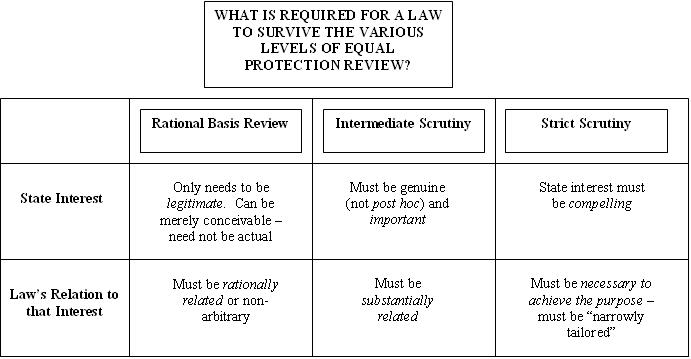
In order to understand its continued importance, it is essential to note that the Fourteenth Amendment makes no explicit mention of sex. The amendment, however, continues to be relevant. Since the Nineteenth Amendment legitimizes women’s role in public affairs and the Fourteenth Amendment grants equal protection for all persons, one might question the necessity of the ERA. Richardson (1973), a case that challenged the denial of family benefits to female service members, then-attorney Ruth Bader Ginsburg argued that “discriminatory sex-based classifications” violated the equal protection clause. Without the ERA, litigation challenging sex discrimination primarily grounded its arguments in the Fourteenth Amendment, which guarantees “equal protection of the law” to all “persons born or naturalized in the United States.” For instance, in Frontiero v. Yet, with a sustained campaign against it in the late 1970s and 1980s, the ERA failed to meet the required threshold of thirty-eight state ratifications. For the next fifty years, the ERA was unsuccessfully brought before Congress, eventually securing approval from the House and the Senate in 1972. In 1923, suffragist Alice Paul proposed the Equal Rights Amendment (ERA), which would explicitly ban discrimination on the basis of sex and codify equality between women and men in the law. This unresolved issue of legal equality was not lost on the women’s rights advocates of the 1920s. However, while this amendment legitimized women’s presence in the public sphere, it did not fully grant them equal rights within it. By enshrining, for both sexes, the right to vote, the Nineteenth Amendment formally recognized that women do indeed have a role in making political, legal, social, and economic decisions. This amendment began a decades-long process of enfranchising women across the country. * MBE and MEE Essay Flashcards that help you learn and memorize key bar exam concepts, effectively and affordably.This year, the United States celebrated the 100th anniversary of the Nineteenth Amendment’s ratification. For essay questions, this will form the last part of your analysis and your conclusion. For MBE questions, this part should be easy if you’ve followed all of the steps. Once you've determined the correct level of scrutiny, it's time to apply the law to the facts of the question. Does the classification satisfy the appropriate level of scrutiny? It's important for you to understand how and when to apply each. There are several levels of scrutiny the court can apply depending on the class of people affected: strict scrutiny, intermediate scrutiny, or rational basis. There is a discriminatory motive or purpose behind the law, in which case P must show that there's a disparate impact and discriminatory purpose.The law is neutral on its face but is applied in a discriminatory manner (e.g., only women are arrested under a facially neutral law).By its terms, the law treats classes of people differently There are three ways to prove a discriminatory classification: That’s the easy part, but the harder part is proving that classification. Make sure there is some classification that is discriminating against someone or a group of people. Is there a discriminatory classification?


With the preliminary analysis out of the way, you can start your substantive EP analysis which consists of three questions:ġ. Make sure you cover this on essays and be careful about getting tripped up on MBE answer choices that exploit this wrinkle.īottom line: be clear as to whether the 14th Amendment applies directly (state/local governments) or is incorporated through the 5th Amendment (federal government). When it comes to federal action concerning equal protection, the 14th Amendment only applies by incorporation through the 5th Amendment Due Process clause. The 14th Amendment itself applies directly only to state and local governments. However, you must remember the following:

So, before you jump into levels of scrutiny, first make sure the government is involved in the discrimination at hand.Īs we know, any equal protection issue implicates the 14th Amendment. Preliminary Analysisīefore we get to the substantive EP analysis, you need to work through two quick steps:Īs we know, generally speaking when it comes to equal protection the Constitution only applies to government action, whether on the federal, state, or local level. But here's the good news: whether you encounter them on the MBE or in an essay, you can tackle any EP question by applying this straightforward, step-by-step analysis. Analyzing equal protection questions can be tricky.


 0 kommentar(er)
0 kommentar(er)
